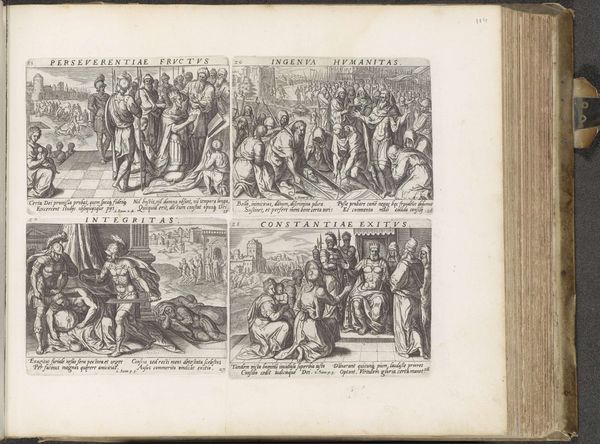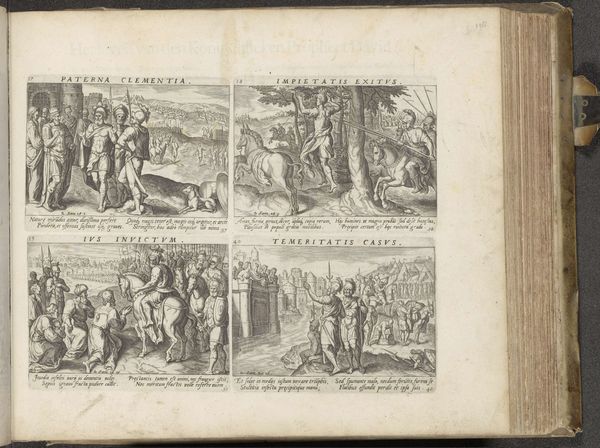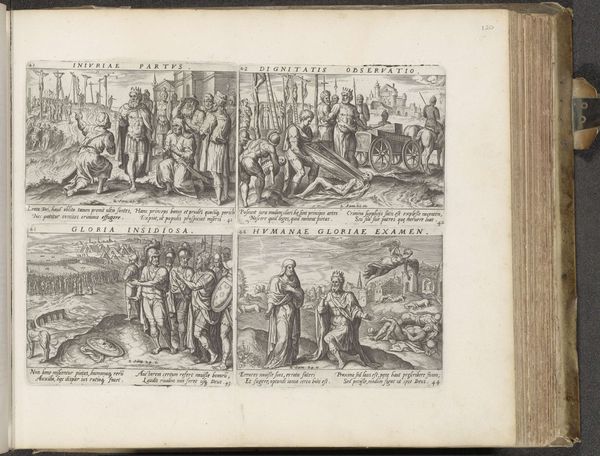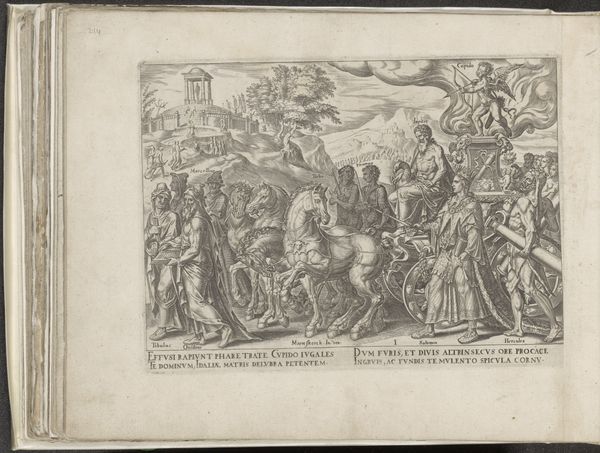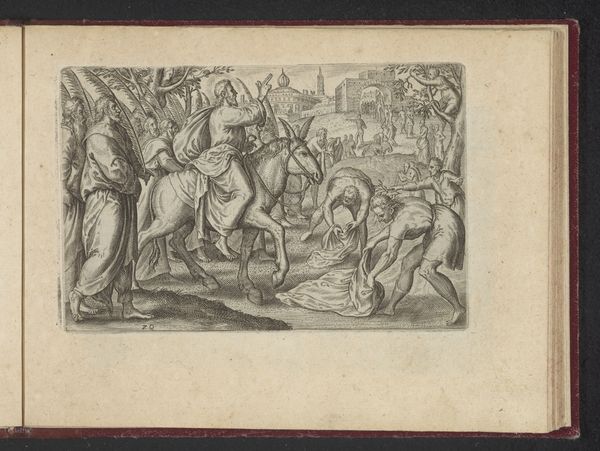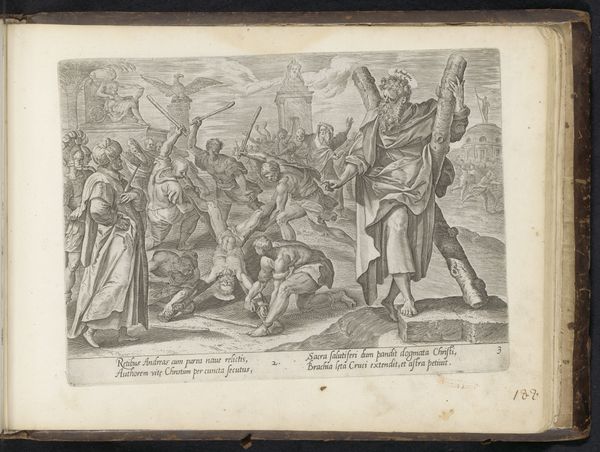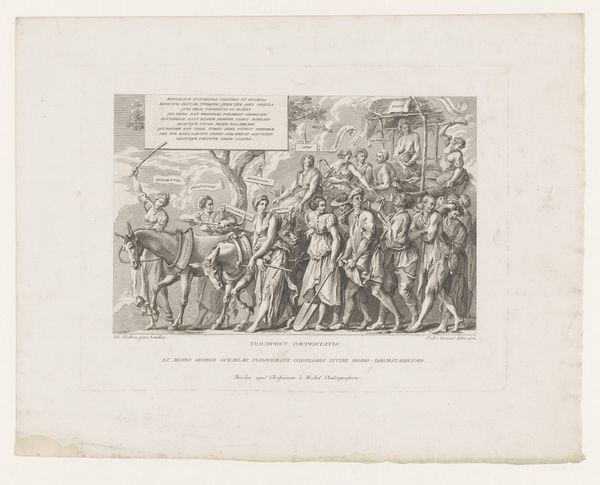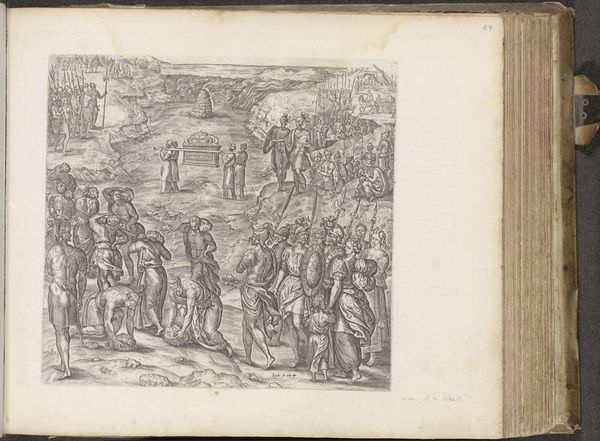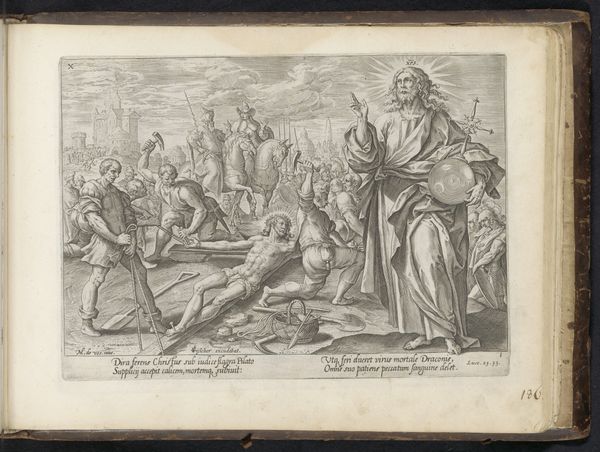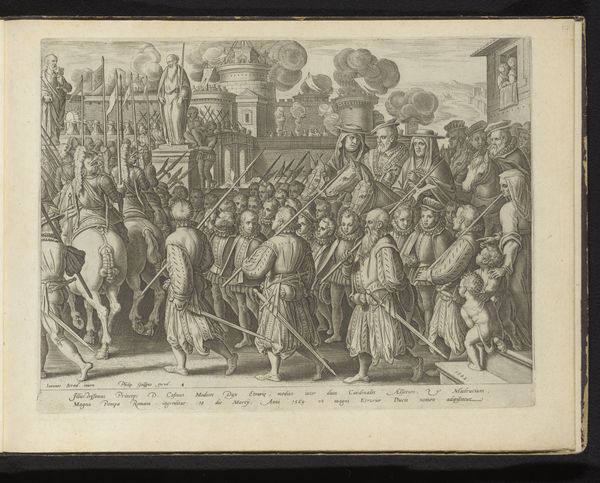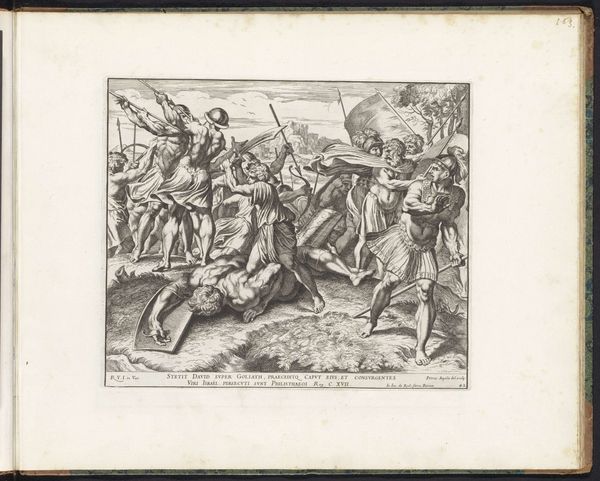
David krijgt een wapenuitrusting / David en Goliat / David toont het hoofd van Goliat aan Saul / David en Jonatan 1575 - 1654
0:00
0:00
johannsadeleri
Rijksmuseum
print, engraving
#
narrative-art
#
baroque
# print
#
figuration
#
coloured pencil
#
history-painting
#
engraving
Dimensions: height 106 mm, width 137 mm, height 106 mm, width 136 mm, height 107 mm, width 137 mm, height 107 mm, width 137 mm
Copyright: Rijks Museum: Open Domain
Editor: So, this engraving from 1575-1654 by Johann Sadeler I, titled "David krijgt een wapenuitrusting / David en Goliat / David toont het hoofd van Goliat aan Saul / David en Jonatan," depicts various scenes from the story of David. It feels very much like a historical record. What do you see in this print in terms of its materials and cultural context? Curator: Considering the material nature of this engraving, let's consider its production. Engravings like these served as a crucial method for disseminating narratives and ideologies during the period. Think about the labor invested in each plate, the skill of the engraver translating stories into reproducible images, and the intended consumption of these images by a broad audience. How does the choice of printmaking, as opposed to painting, shape the narrative? Editor: It's interesting you bring up dissemination. Prints allowed for wider distribution than unique paintings, democratizing access to biblical scenes, which is a very important factor. It makes me consider how different socioeconomic groups might interpret it, perhaps reinforcing social norms for some, while encouraging defiance for others? Curator: Exactly. We also see that these multiple scenes are all on one plate. Consider the economic motivation and impact of that production choice on both labor and viewership. How many were needed before it was profitable to produce another plate depicting a different biblical narrative? Editor: So it is less about "high art" than a form of visual storytelling, intertwined with 16th century printing practices and consumption by varied audiences. Thank you, this has changed the way I considered its value. Curator: Indeed! By focusing on the material and production, we've unlocked a deeper understanding of the print's function and significance in its time.
Comments
No comments
Be the first to comment and join the conversation on the ultimate creative platform.

